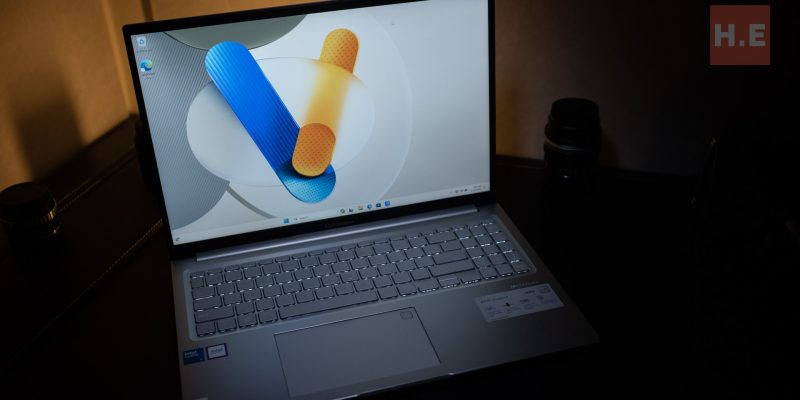
ASUS Vivobook 16 (A1605) Quick Review — an Intel-powered 16-incher

ASUS Vivobook 16 (A1605)
Featuring an Intel Core 5 120U, the ASUS Vivobook 16 delivers on the big-screen 16-inch experience with a nice serving of performance.
What's Good?
- Decent performance out of the box
- Dual-channel 16GB memory from the factory
- Upscaled antimicrobial protection
- Convenient charging
- A tougher-looking design
What's Not?
- Short battery life
- 1x1 WiFi 6 is limited to 600Mbps
If you think you have already saw this review, well, your eyes didn’t deceive you. Not fully, at least. The ASUS Vivobook 16 (A1605) is at its core (pun intended) an Intel-powered version of the ASUS Vivobook 16 (M1605). With only one major difference, you can refer to our review of the latter, and just read this to see if the Intel Core 5 120U is the better choice. So, let’s see if you should get this, or should you get the Vivobook 16 with the AMD Ryzen 5 7530U / Ryzen 7 7730U instead?
Is the performance good?
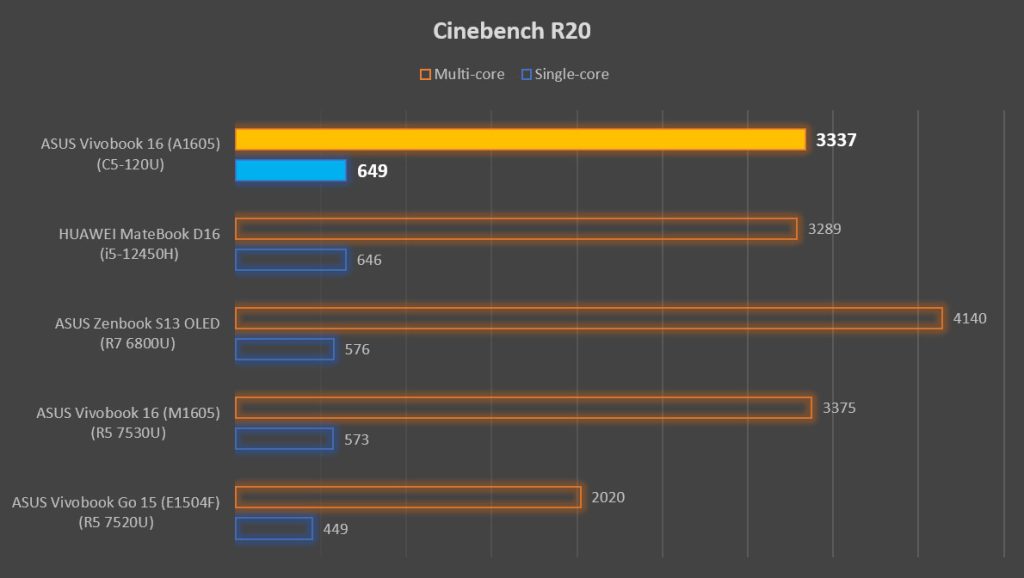
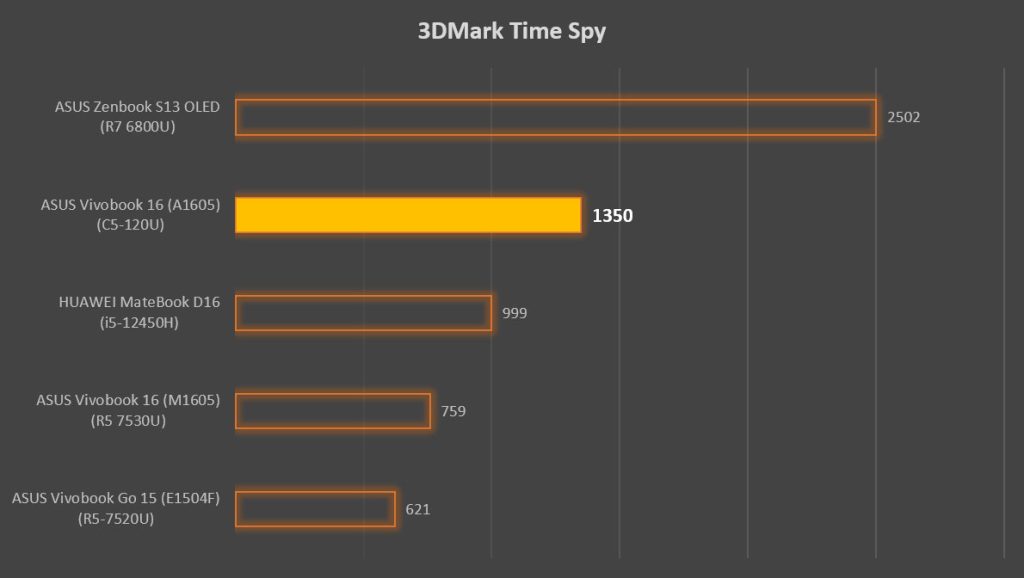
Let’s start with the good news. The ASUS Vivobook 16 (A1605) boasts higher single-core performance than its brethren, which will help to deliver a snappier user experience. Graphics performance is also significantly higher, but it is worth noting that the M1605 we tested was configured with only single-channel memory, which hampers its iGPU performance. With a dual-channel config, the gap should shrink to a negligible level, and we might even see the AMD chip pull ahead of the Core 5 120U in certain games and applications.
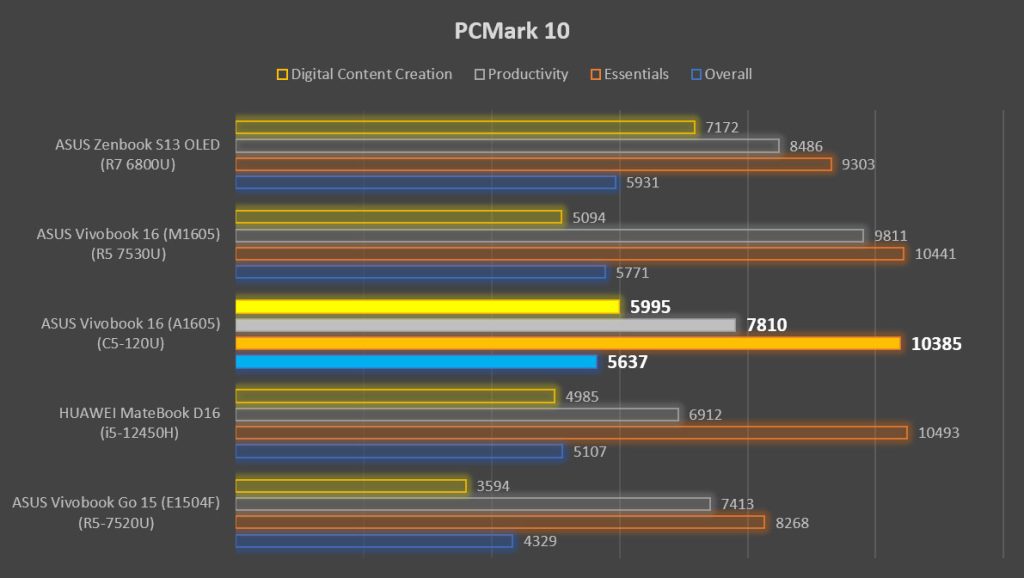
When it comes to overall computing which we gauge with PCMark 10, the A1605’s performance falls slightly behind the M1605. It doesn’t quite keep up in the productivity workload, presumably due to the lack of P-cores to do the heavy lifting. Digital content creation performance is good, which bodes well for budding content creators looking for a budget-friendly laptop to start their journey on.
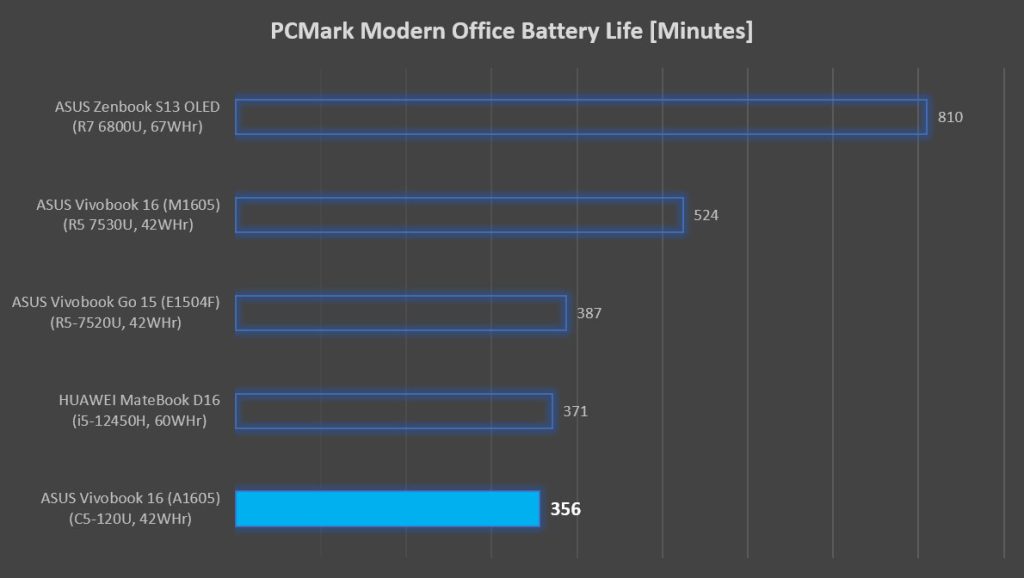
Battery life is not the A1605’s strong suit, with a result that’s nearly 3 hours shorter than the M1605. I assume that the higher boost clocks of the Intel Core 5 120U are really at the edge of Raptor Lake’s efficiency curve, and thus resulted in a somewhat more power-hungry chip. In terms of battery life, AMD-powered laptops clearly has the upper hand, as visible in the stack above. As a whole, it seems like the ASUS Vivobook 16 (A1605) trades battery life for outright CPU performance. So, is performance or battery endurance more important to you?
ASUS Vivobook 16 (A1605) Specifications
| Processor | Intel Core 5 120U, 10C/12T (2P+8E) @ up to 5.0GHz 12MB L3 cache 15W TDP Intel 7 |
| Memory | 16GB DDR4-3200, dual channel (8GB on-board + 8GB SO-DIMM) |
| Graphics | Intel Graphics, 80 EU @ 1.25GHz |
| Storage | 512GB Micron 2400 SSD (M.2 NVMe PCIe 4×4, NVMe 1.4) |
| Display | 16-inch FHD 16:10 (1920 x 1200) Chi Mei CMN1618 IPS LCD display 300 nits max brightness, 45% NTSC gamut 86% screen to body ratio |
| Connectivity | WiFi 6 + Bluetooth 5.3 (Intel AX101) 1 x USB-C (USB 3.0, 5Gbps; with USB-PD support) 2 x USB-A (USB 3.0, 5Gbps) 1 x USB-A (USB 2.0, 480Mbps) 1 x HDMI 1.4 1 x 3.5mm combo jack |
| Audio | Stereo speakers SonicMaster Array microphone |
| Power | 42WHr 3-cell Li-ion battery 45W AC adapter |
| Dimensions | 358.7 x 249.5 x 19.9 mm |
| Weight | 1.88kg |
ASUS Vivobook 16 (A1605) — should you buy this?
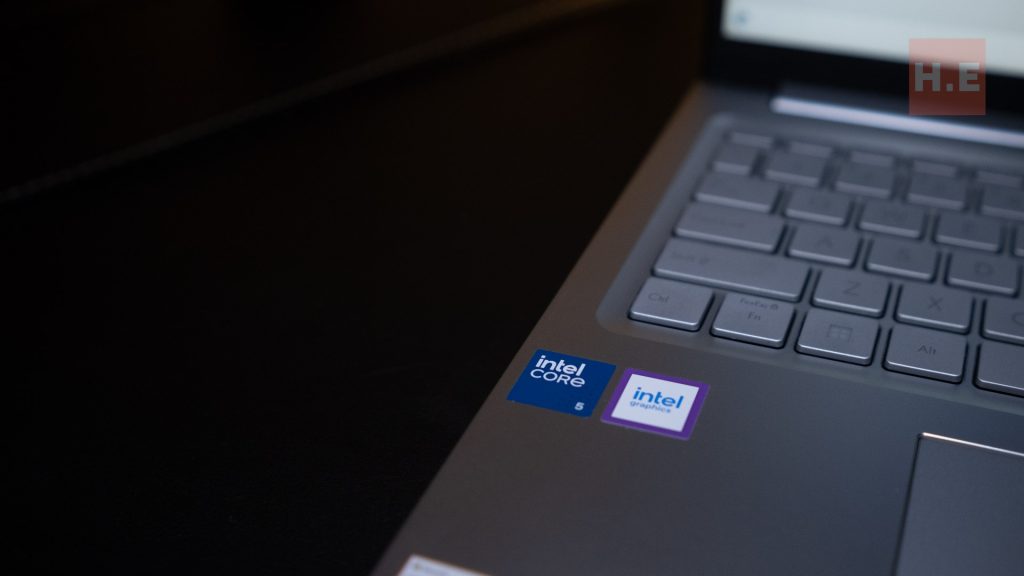
The extra CPU performance on tap from the Intel Core 5 120U might come in handy, so if that’s something you want, you can opt for the ASUS Vivobook 16 (A1605). For RM3,099, it’s a pretty solid buy, and aside from wishing for a more vibrant display and maybe moving the ports to the left flank, I can’t really think of anything else that I would want from a laptop in this price range. We have already published a comparison of this laptop against a popular laptop choice for students, and you can check it out here.
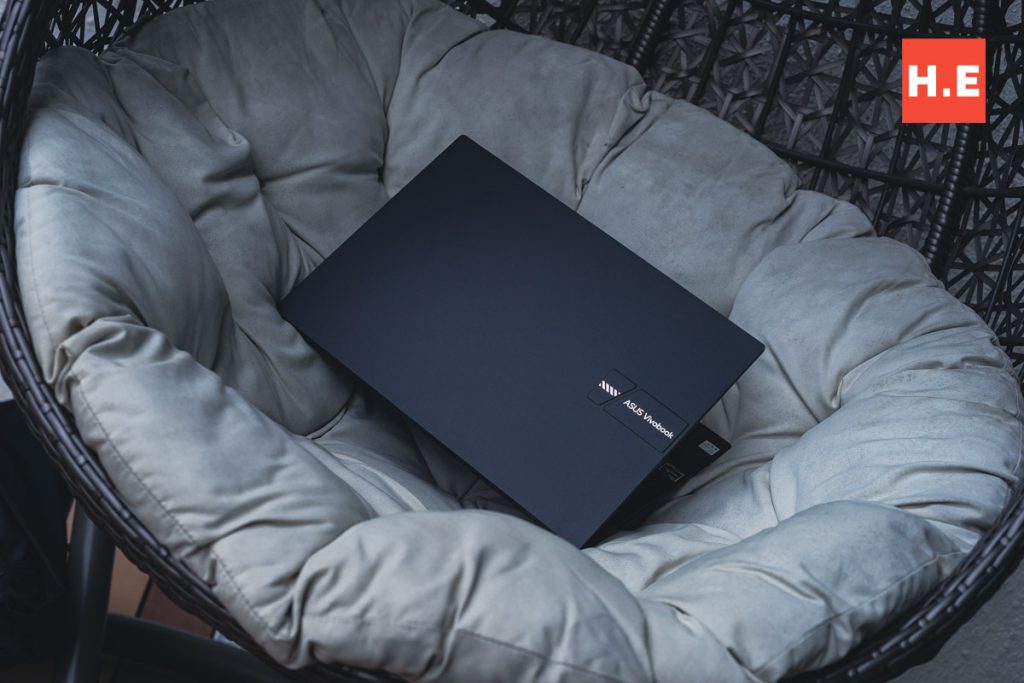
But as with a lot of ASUS laptops, the competition from within the family is pretty serious as well. Between the time we published the review of the ASUS Vivobook 16 (M1605) and the time of writing this review, ASUS added a free upgrade to 16GB RAM for the ASUS Vivobook 16 (M1605), priced at the same RM2,599 as the 8GB variant we reviewed. The Ryzen 5 7530U is not any slower than the Intel Core 5 120U under the hood here, and I would think that the RM500 saved by opting for the AMD-powered variant would feel very nice in your pocket.
For more info about the ASUS Vivobook 16 (A1605): https://www.asus.com/my/laptops/for-home/vivobook/vivobook-16-a1605/
Help support us!
If you are interested in either the Vivobook 16 (A1605) or (M1605), we would really appreciate if you purchase them via the links below. The affiliate links won’t cost you any extra, but it will be a great help to keep our lights on here at HelloExpress.
- Vivobook 16 (A1605) (Lazada): https://s.lazada.com.my/s.R0w2E
- Vivobook 16 (M1605) (Lazada): https://s.lazada.com.my/s.hPYD0
- Vivobook 16 (A1605) (Shopee): https://shope.ee/9UdgXJt16s
- Vivobook 16 (M1605) (Shopee): https://shope.ee/9pGWvyujIJ
ASUS 4A Guarantee
ASUS elevates your peace of mind with Assured Quality via rigorous testing to meet US military-grade standards, 24/7 Always-on Support, All-around Coverage with easily accessible services all around the world and Added-value Experience with comprehensive warranties that even cover accidental damage. For more info, check out ASUS 4A Guarantee at https://www.asus.com/my/microsite/4aguarantee/.










